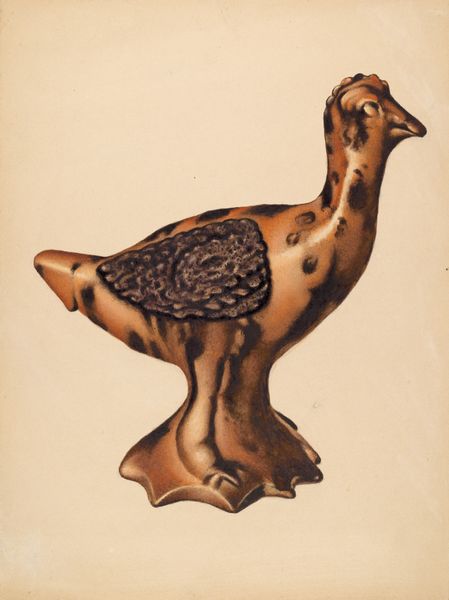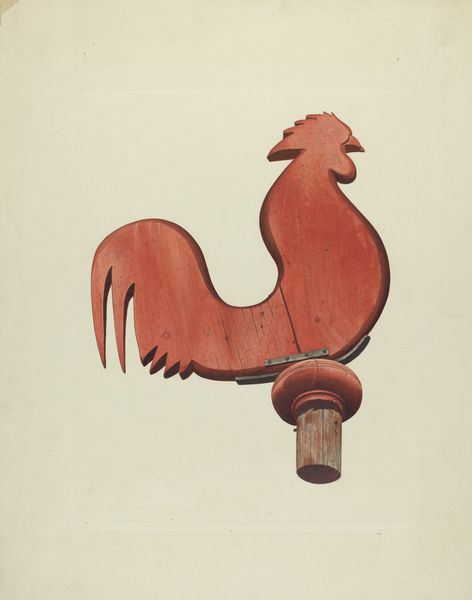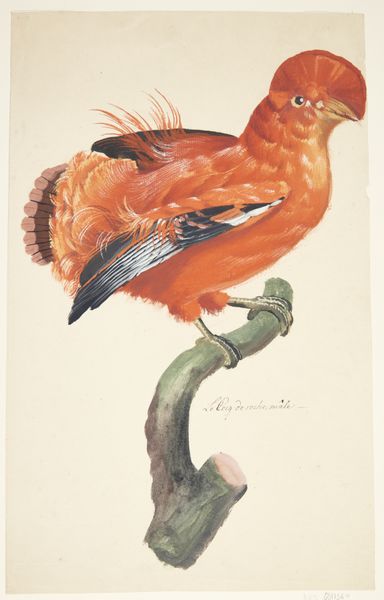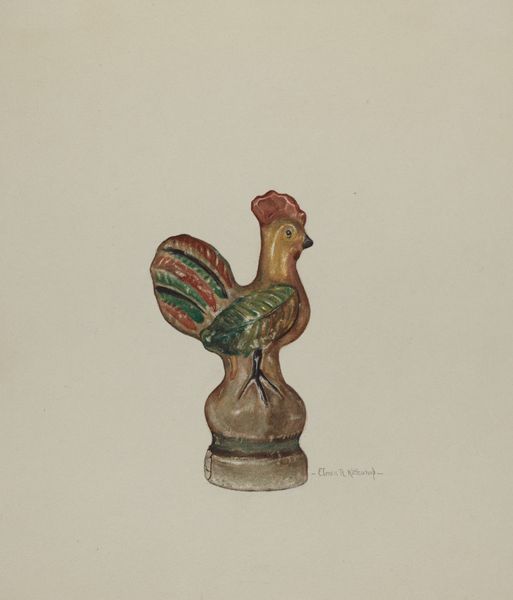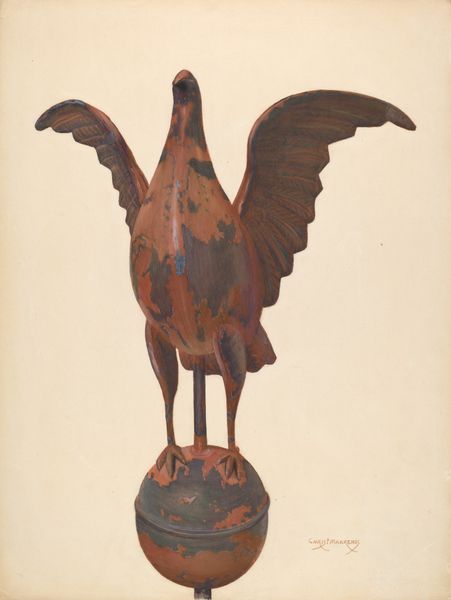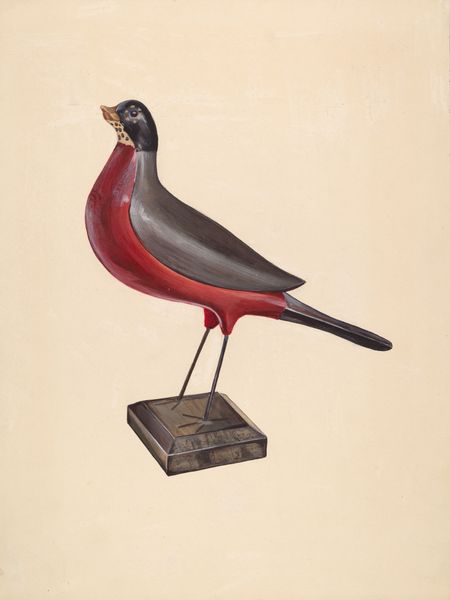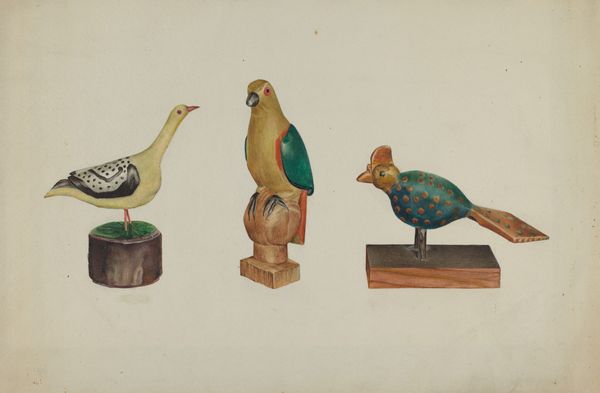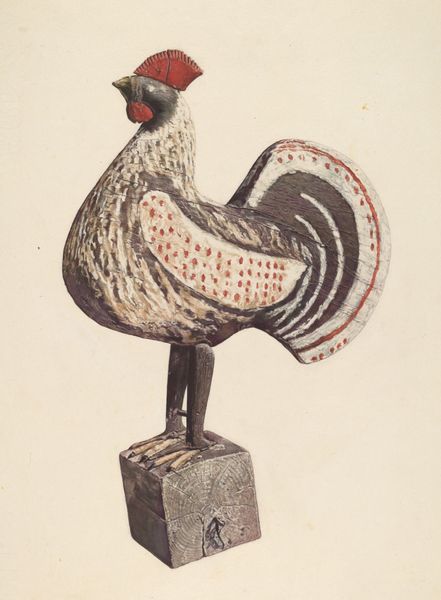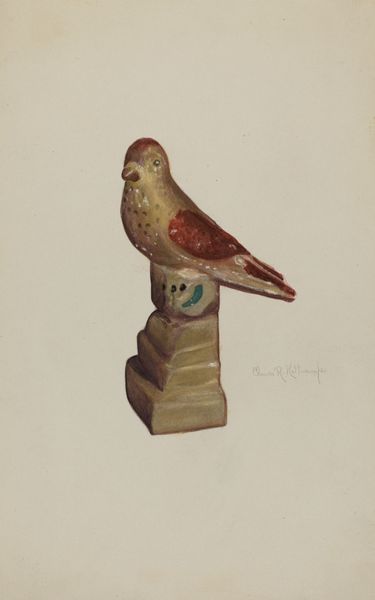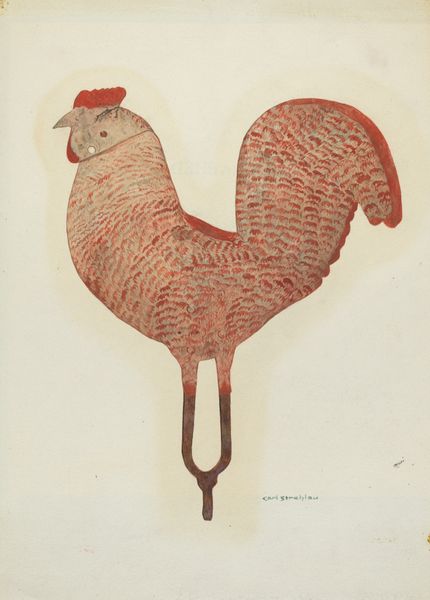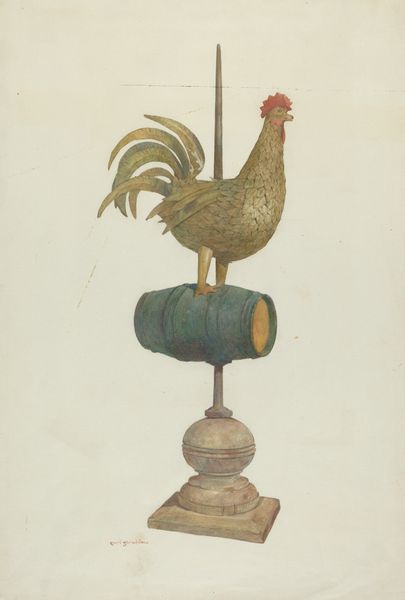
drawing, coloured-pencil, watercolor, sculpture, wood
#
portrait
#
drawing
#
coloured-pencil
#
water colours
#
figuration
#
watercolor
#
coloured pencil
#
folk-art
#
geometric
#
sculpture
#
wood
#
botanical art
#
watercolor
Dimensions: overall: 30.3 x 26.8 cm (11 15/16 x 10 9/16 in.) Original IAD Object: 8 1.4" high; 4 3/8" wide
Copyright: National Gallery of Art: CC0 1.0
Curator: I find myself captivated by the inherent simplicity of this image. The lines, forms, and coloration project a charming naivete. Editor: Absolutely. Before we delve deeper, let's give listeners some context. Here we have Carl Strehlau's "Pennsylvania German Carved Bird", estimated to have been created between 1935 and 1942. The artwork combines watercolor, coloured pencil, and possibly gouache to depict a folk-art sculpture. Curator: Yes, Strehlau captures the objectness of the carving remarkably well. Notice how the artist employs flat planes of color and the deliberate, somewhat unsophisticated rendering of form, such as the bird's circular body and geometrically shaped head, emphasizes its artificiality. The texture is equally intriguing; its smooth surface implies that the original artifact was meticulously polished. Editor: It makes me wonder about the original context of this carving. The Pennsylvania German community had strong artistic traditions. Was this intended as a child's toy? Or was it a decorative object, laden with symbolic meaning relating to freedom, nature, or perhaps even spirituality? The colours, too, are significant—the red and green echoing folk-art motifs, connecting it to a deeper cultural narrative. Curator: From my perspective, the symbolism resides not in the direct imagery but the careful compositional balance, which gives it equilibrium. Observe how the bird is anchored atop the sphere, that form offering further balance, giving it the pleasing weight and rhythm across the picture plane. Editor: I would suggest that rhythm extends beyond its compositional elements and can include a cultural assessment, since many folk traditions are founded on community rituals of passing on tradition. Who created this bird, and what stories or meanings were invested within it, before it came to be archived through Carl Strehlau's study of form? Curator: That said, regardless of symbolic purpose, the formal elements successfully harmonize to deliver a complete visual experience. Editor: Ultimately, this "Pennsylvania German Carved Bird", and Strehlau’s work generally, invites a closer examination of how everyday objects and cultural traditions become powerful symbols in society.
Comments
No comments
Be the first to comment and join the conversation on the ultimate creative platform.
